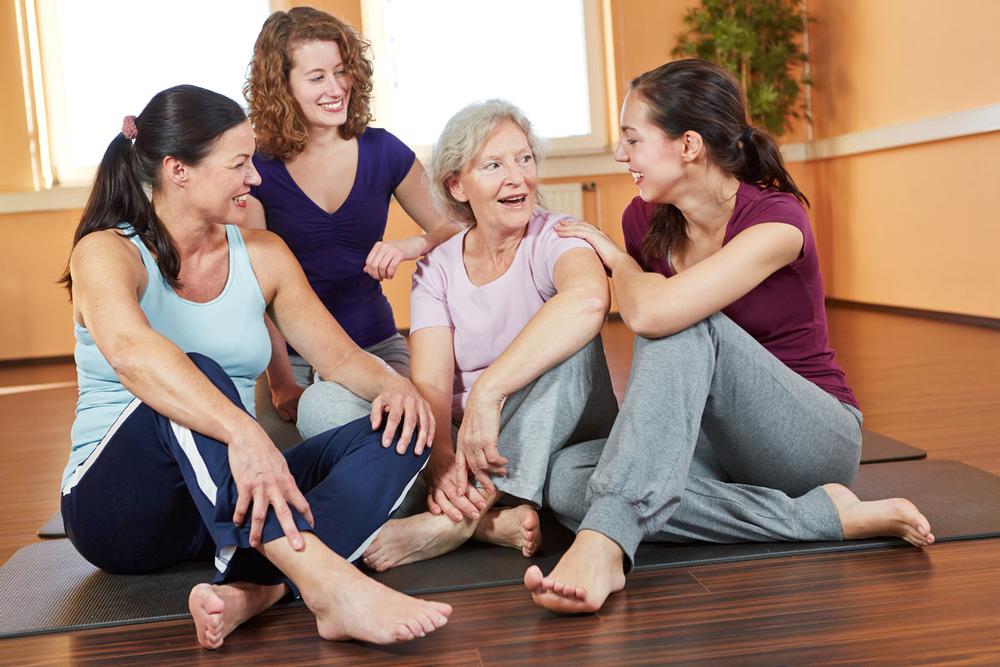features
Retention series: Creating a community
In the latest part of his retention series for Health Club Management, Dr Paul Bedford looks at the importance of maintaining a link with members
Just using the word ‘club’ begins to create a sense of community – something many operators claim to be striving towards. But interaction is also key to creating a genuine ‘club’, and many health clubs fail to maintain even the most basic level of communication with their members.
Clubs are places you join, meet like-minded people and share experiences. Yet in our recent research – 1,040 interviews conducted among more than 5,000 health club members – many of those interviewed described no sense of community in the clubs they had previously been members of.
Members want to engage with their health club on various levels: sometimes on a transactional level; other times on a friendship level. The problem is that some operators see the relationship as purely transactional, with the relationship effectively over once the transactions are complete.
Fitting right in
Some health clubs do get it right, however, and when they do they’re rewarded with improved member loyalty: over 80 per cent of those interviewed said the club they enjoyed being a member of was the one that provided them with a sense of belonging, of being part of something – a true member. This meant they looked forward to going to the club above and beyond the value they placed on the workout itself.
“I’ve been a member of four clubs. When you find one that values you as a person, not just as a paying member, you enjoy being in the club more. I never felt judged and always felt they were pleased to see me,” said one respondent.
This sense of fitting in and belonging begins with the joining phase – how you tour and the way you demonstrate interaction with existing members. Experienced exercisers in particular recognise the relationship that staff have with members: “If during the tour you see the sales guy talking to members, you get a sense of what’s to come. If they’re not interacting with existing members, the chances are they won’t interact with you once the sale is made.”
Once the member has joined, the sense of belonging should begin. However, those interviewed didn’t seem as keen on new member evenings as might have been expected. “It’s a bit like when you go on holiday and the first morning you have to go and see the rep,” said one. “They explain about the resort and then try and sell you stuff. It’s the same in health clubs, but the staff seem less enthusiastic about it all. I’ve been to a couple now and it can just feel like a waste of time for everyone.”
Clubs should therefore seek ways of quickly integrating the member into club life. Explaining what’s normal on a day-to-day basis was seen as useful by respondents, as opposed to letting the member find out for themselves: “They told me that, between 3.00pm and 6.00pm, the club has larger numbers of children and parents in. That Saturday afternoons are quiet in the gym, but that the tennis crowd dominates the courts and the bar area. Sunday mornings would be a mix, they said – lots of parents in with kids using the pool, but with the gym and classes also busy.”
It seems like an obvious point that new members would value being told what to expect, but this is nevertheless often overlooked by clubs.
The people factor
Club staff are, without question, the biggest factor in creating a sense of belonging: in our research, interview after interview produced similar comments about particular staff being a member’s link to the club. It’s the staff that members build the relationship with, not the building or the brand. When members describe loving a club, they’re almost certainly talking about the staff as much as the facilities.
That staff-member relationship is important in both the short and long term: during early stages of membership, it’s the staff who reassure and support the member; over time, this develops into a working relationship and sometimes even friendship.
“When I joined, I wasn’t in good shape. Having staff around me to give feedback was so important on the days I’d had enough. Sometimes just a smile would do. They knew I’d been in; I knew someone had seen me work out. It was like a validation of my existence as a member.”
These sentiments appear to be true throughout the club, with members stating that receptionists, bar staff or class teachers all have the ability and opportunity to provide feedback, support and validation.
This poses a question for club owners regarding how they recruit the most appropriate staff. Too often it appears that a body – any body – will do. Other times it seems qualifications are the main prerequisite. However, the ability to get along with members seems to be what members value the most.
“I’ve been doing yoga for years, and most of the teachers I’ve met are so uptight about yoga. But [names teacher] is really relaxed about the whole thing. Her classes are great, you feel included, and it’s not only those who can do all of the advanced stuff that get the attention – I’m sure she speaks to everyone at some point in the class.”
A shared experience
Our research has identified that the demographic profile of membership bases is all but identical across the sectors, with people who once joined private sector clubs now just as likely to join public sector facilities.
This lack of diversification means members are far more likely to meet people like themselves in every type of club, which in turn helps them fit in more quickly. But at the same time, it means a broader demographic profile within each club, with friendships between members being built based on the exercise experiences they share, rather than on their sociodemographic backgrounds. Conversations between judges and plumbers are about the sessions they have just completed or are going to do tomorrow. This is magnified in CrossFit and boutique clubs, where people are specifically coming together to share common experiences. It’s become less about who YOU are and more about what WE are doing.
This doesn’t always mean members are necessarily looking to work out together, but it does mean they are increasingly keen to share their experiences with others, all of which boosts the sense of community. Social media has allowed this approach to proliferate: with the growth in mobile devices able to record and store exercise data, members are posting their workout experiences to demonstrate to themselves – and others – that a session has been completed. Members report using a wide range of apps and devices to collect, collate and share their results.
They’re setting up their own Facebook and LinkedIn groups – not the clubs’ official sites but rather member-based pages that offer a mix of praise and criticism for clubs. Some are set up with the sole purpose of complaining, while others are places members go to discuss training ideas and classes and hang out.
These sites also appear to be a way for new members to make friends with those who attend the same classes and who have had the same experiences. In this environment, members who would not normally feel able to voice their opinion about a particular issue are able to join the conversation – and these digital conversations eventually lead to real-world conversations within the club.
“When I joined the club, I looked to see if it had a Facebook page. It did, but it was all pretty boring. I found another site for the club set up by one of the girls who does a lot of indoor cycling.
I watched the conversations and then started to join in. I started by asking questions about shorts and discomfort. It seems everyone was really happy to discuss underwear versus no underwear choices in a cycling class! At the next class, several of the members approached me and said they’d been wanting to ask the same question. One bloke came up to me and said he went commando. I’m not sure if it was a chat-up line or what, but it made me smile.”
Digital communication
However, this sort of activity has been member-driven to date, with clubs generally only using digital channels to talk to members about the club – and here members can be critical of some of the content. “I recently got an email from my health club, which started ‘Dear valued member’,” said one respondent. “If I’m so valuable, why don’t they use my name? It’s just a generalised marketing email about how great the club is and what’s coming up that I can buy. It’s a sales letter poorly disguised as a newsletter. They have nothing to say, but they think this is good for member relationships.”
However, digital updates are appreciated for day-to-day news about the club, classes and changes to normal practice: “I was on my way to the club and I got a tweet that the showers in the men’s changing rooms were out of order. I ditched my morning workout and went straight to work. I was a bit miffed that I missed my workout, but pleased I didn’t go out of my way just to be greeted by a notice in reception when I got there. By the time I’d got to work, they had sorted it and sent another tweet apologising for the inconvenience. That was thoughtful.”
Members therefore appear happy with the idea of digital interaction with their club, all of which is positive for building connections and a sense of belonging. However, our research indicates that several rules apply. Firstly, clubs mustn’t think that sending emails is as good as providing actual service: digital communication is not a replacement for service. Secondly, clubs must use a personal tone – ‘dear valued member’ is too corporate. Don’t just communicate with members to sell to them, as they’ll see straight through this. And, to quote one respondent: “Stop hiding changes to terms and conditions at the bottom of a two-day spa promotion.”
Paul Bedford PhD has worked in the fitness industry for more than 20 years. His business, Retention Guru, helps health club operators increase retention, reduce attrition and improve member loyalty.
Email paul-retentionguru.co.uk
Twitter @guru_paul
LinkedIn Paul Bedford






































































